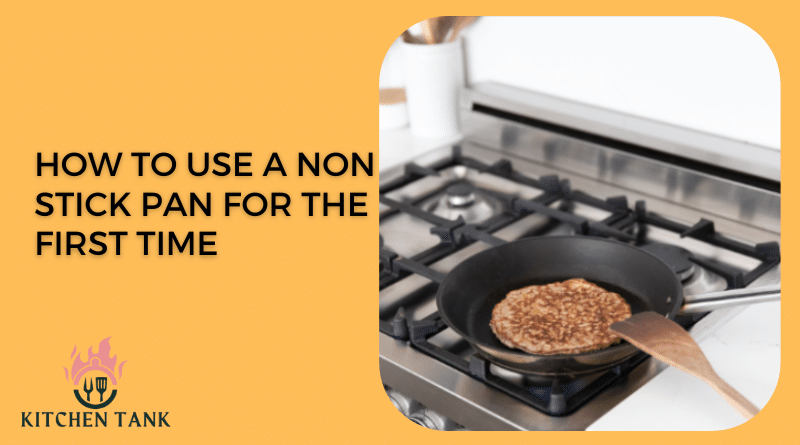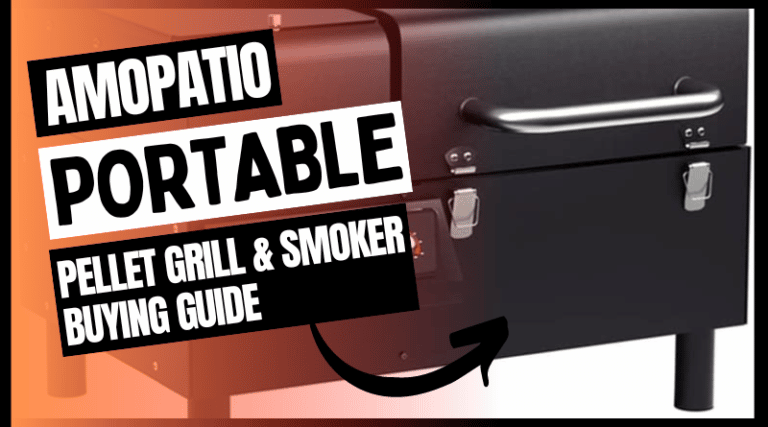Cooking can be a therapeutic and creative experience, and having the right tools can make all the difference. If you’re someone who enjoys spending time in the kitchen, you’ve likely heard of non-stick pans.
They’re a popular choice among home cooks and professional chefs alike, and for good reason. However, if you’ve never used a non-stick pan before, you may be wondering how to use a non stick pan for the first time correctly to get the best results.
In this article, we’ll explore the ins and outs of using a non-stick pan for the first time. We’ll cover everything from preparing the pan to cooking with it and cleaning it afterward.
Whether you’re a novice cook or a seasoned pro, our guide will provide you with the information you need to use a non-stick pan effectively and get the most out of your culinary adventures.
So, if you’re ready to learn how to use a non-stick pan for the first time, stick around. We’ll provide you with step-by-step instructions, tips, and tricks that will help you become a non-stick pan pro in no time.
Whether you’re whipping up a quick breakfast or preparing a gourmet meal, a non-stick pan can be a valuable tool in your kitchen arsenal, and we’re here to show you how to use this.
How to Use a Non stick Pan for the First Time
Cooking with a non-stick pan can make your culinary adventures much more enjoyable. Not only does it make cooking and cleaning a breeze, but it can also reduce the amount of oil and fat needed to cook your food.
However, if you’re using a non-stick pan for the first time, it’s essential to learn how to use it correctly to ensure the non-stick coating lasts for a long time. In this guide, we’ll outline the steps you need to follow to use a non-stick pan for the first time.
Before you start cooking with your new non-stick pan, it’s essential to prepare it properly. Start by washing the pan with warm, soapy water, and rinse it thoroughly.
Dry the pan thoroughly, and then apply a small amount of cooking oil or non-stick spray to the pan. This step will help to condition the non-stick coating and prevent food from sticking to the pan.
Once your non-stick pan is prepared, it’s time to start cooking. Remember that non-stick pans are designed to be used on low to medium heat, so avoid using high heat.
Always use silicone or wooden utensils to avoid scratching the non-stick coating, and be gentle when stirring or flipping your food. With proper care and maintenance, your non-stick pan can be a valuable tool in the kitchen for years to come.
Preparing the non-stick pan
Preparing a non-stick pan before its first use is crucial to ensure it functions correctly and lasts for a long time. Here are the steps you should follow to prepare your non-stick pan:
- Wash the pan with warm water. The soapy water is used to remove any dirt or stickiness during the manufacturing process. A soft sponge or cloth usage is recommended to avoid scratches on the non-stick coating.
- Rinse the pan thoroughly to remove all traces of soap, and dry it with a clean towel or cloth. It is sure to completely dry the pan before jumping to other steps.
- Apply a small amount of cooking oil or non-stick spray to the pan’s surface. This step will help to condition the non-stick coating and prevent food from sticking to the pan.
- Heat the pan on low to medium heat for a few minutes. This step will help the oil or spray to be absorbed into the non-stick coating and create a non-stick surface.
- Let the pan cool down completely, and then wipe away any excess oil or spray with a paper towel.
Cooking with the Non-Stick Pan
Cooking with a non-stick pan is a breeze once you’ve prepared it correctly. Here are some tips to help you cook with your non-stick pan:
- Preheat the pan on low to medium heat for a few minutes before adding any ingredients. This step will ensure that the pan is evenly heated and ready for cooking.
- Use a low to medium heat setting when cooking with your non-stick pan. High heat can damage the non-stick coating and cause food to stick to the pan.
- Use utensils made of silicone, nylon, or wood when cooking with your non-stick pan. Utensils of metal can scratch the non-stick coating to reduce its effectiveness.
- Avoid using cooking sprays directly on the non-stick surface, as they can build up over time and make the surface less effective. Instead, use a small amount of oil or butter to coat the pan’s surface.
- Don’t overcrowd the pan with too many ingredients, as this can cause the food to steam instead of brown. Cook in batches if necessary.
- When flipping or stirring food in the pan, use a gentle touch to avoid scratching the non-stick coating.
- Clean the pan with warm, soapy water and a soft sponge or cloth after each use. Avoid using abrasive cleaners or scrubbers that can damage the coating.
Cleaning the Nonstick Pan
Cleaning a non-stick pan requires some care to avoid damaging the non-stick coating. Here are some steps to follow:
- Cool down the pan completely before cleaning it. Putting a hot non-stick pan under cold water can cause the coating to peel off.
- A soft sponge or dishcloth can use to clean the pan. Use of abrasive sponges or scouring pads must be avoided as they can scratch the non-stick surface.
- Use mild dish soap and warm water to clean the pan. Do not use any harsh cleaning agents or chemicals as they can damage the non-stick coating.
- For tough, stuck-on food, soak the pan in warm soapy water for 10-15 minutes before cleaning it.
- Use a non-abrasive brush or scraper to remove any stubborn food particles from the pan.
- Rinse the pan thoroughly with warm water to remove all soap residue.
- Dry the pan completely with a soft towel or paper towel. Do not use a metal utensil to dry the pan as it can scratch the non-stick surface.
Storing the Non-Stick Pan
Proper storage of non-stick pans can help to prolong their lifespan and prevent damage to the non-stick coating. Here are some tips for storing your non-stick pan:
- Cool down the pan completely before storing it. Putting a hot non-stick pan in a cupboard or drawer can cause damage to the coating or even start a fire.
- Avoid stacking heavy items on top of the non-stick pan as this can damage the coating.
- If you need to stack multiple non-stick pans, place a layer of paper towels or soft cloth between each pan to prevent scratching.
- Store the non-stick pan in a dry and cool place, away from direct sunlight and sources of heat.
- If your non-stick pan has a detachable handle, remove it before storing the pan to save space.
- If you don’t have enough space to store the pan in a cupboard or drawer, consider hanging it on a pot rack or wall-mounted rack.
Conclusion
How to use a nonstick pan for the first time is quite a tricky job. Before you start cooking with your new non-stick pan, it’s essential to prepare it properly. Start by washing the pan with warm, soapy water, and rinse it thoroughly.
Always use silicone or wooden utensils to avoid scratching the non-stick coating, and be gentle when stirring or flipping your food. Let the pan cool down completely for cleaning it. Clean the pan with warm, soapy water and a soft sponge or cloth after each use. Avoid using abrasive cleaners or scrubbers that can damage the coating.
FAQs
A: No, non-stick pans do not require seasoning. However, it is recommended to wash the pan with warm, soapy water before using it for the first time to remove any manufacturing residue.
A: It is not recommended to use metal utensils with non-stick pans as they can scratch the coating. Instead, use silicone, plastic, or wooden utensils to avoid damaging the surface.
A: No, you do not need to use oil or butter when cooking with a non-stick pan. The non-stick coating should prevent food from sticking to the surface.
A: It is not recommended to use a non-stick pan on high heat as it can damage the coating. Instead, use a low or medium heat setting to avoid overheating the pan
A: Clean your non-stick pan with a soft sponge or dishcloth and mild dish soap and warm water. Avoid using abrasive sponges or scouring pads, as they can scratch the non-stick surface. Rinse the pan thoroughly and dry it with a soft towel or paper towel.







